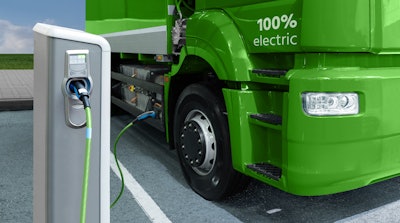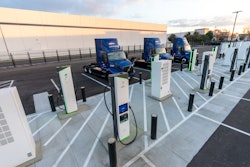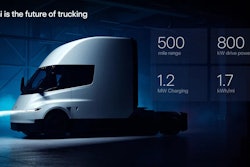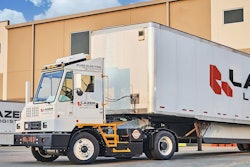
What you need to know:
- The Trump administration released updated guidance for the $5 billion National Electric Vehicle Infrastructure (NEVI) Formula Program, which had been suspended in February.
- Originally launched by the Biden administration, NEVI is designed to fund EV charger infrastructure for commercial and passenger vehicles at the state level.
- Findings during suspension found that 84% of NEVI funds were still unobligated.
- States must submit updated EV Infrastructure Deployment Plans within 30 days of the new August 11 guidance.
The Trump administration issued revised guidance earlier this week for the $5 billion National Electric Vehicle Infrastructure (NEVI) Formula Program, which was suspended last February.
[Related: Trump administration suspends EV charger grant program]
NEVI is the grant program established by the Biden administration that provides funding to states for the strategic deployment of chargers for commercial and passenger electric vehicles.
The revised program, according to Transportation Secretary Sean Duffy, now offers streamline applications, greater flexibility for states, and reduced red tape.
"If Congress is requiring the federal government to support charging stations, let’s cut the waste and do it right," said Secretary Duffy. "The Biden-Buttigieg Administration failed to deliver EV chargers despite their promises. Our revised NEVI guidance slashes red tape and makes it easier for states to efficiently build out this infrastructure. While I don’t agree with subsidizing green energy, we will respect Congress' will and make sure this program uses federal resources efficiently."
During the program's suspension (reimbursement of existing obligations remained unaffected), Duffy and the Federal Highway Administration (FHWA) launched a full review with the goal of making it more efficient, instead of permanently eliminating it. One key issue they claimed to have found was that 84% of NEVI funds remained unobligated.
How come? According to Duffy, there were too many regulatory requirements, such as that 40 percent of benefits must go towards disadvantaged communities.
Under the new Interim Final Guidance, States are now being asked to submit their EV Infrastructure Deployment Plans within 30 days of the new guidance issued on August 11.
The Department of Transportation provided the following summary of improvements it claims will be enabled thanks to its changes:
- Minimizes the content in state plans to statutory and regulatory requirements.
- Simplifies the state plan approval process.
- Aligns community engagement with regulatory requirements and reduces consultation requirements to advance projects.
- Provides states with flexibility to determine the appropriate distance between stations along alternative fuel corridors to allow for reasonable travel.
- Minimizes requirements for states to consider electric grid integration and renewable energy.
- Eliminates requirements for states to address consumer protections, emergency evacuation plans, environmental siting, resilience and terrain considerations.
- Provides states with more flexibility to determine when their system is built out allowing NEVI funds to be used on public roads statewide.
NEVI funds can be used for the purchase and installation of battery-electric vehicle (BEV) charging infrastructure that supports light-, medium-, and heavy-duty vehicles.
In response to the DOT's announcement, the California Clean Air Vehicles for a Stronger Economy (CALSTART) issued the following statement:
“CALSTART applauds the U.S. Department of Transportation for recognizing the importance of the NEVI program and the role of public charging to drivers and fleets in every state. This decision reinforces the idea that drivers need a wide range of options on the road. Protecting consumer choice is vital to the transportation sector and we are pleased to see this principle upheld.
“We appreciate the Department’s overall efforts to cut red tape and deliver on a bi-partisan commitment to building a charging network along our highways and transform the way people and goods move across the country.
“Streamlining the program will unlock more financial gains—including good jobs. This move enables states to advance infrastructure projects that efficiently meet vehicle charging demand.
“What’s more, it will help our country remain competitive in a global marketplace racing toward vehicle electrification at break-neck pace. Public investments such as NEVI will play an important role in determining which countries take the lead in the emerging new transportation sector."












